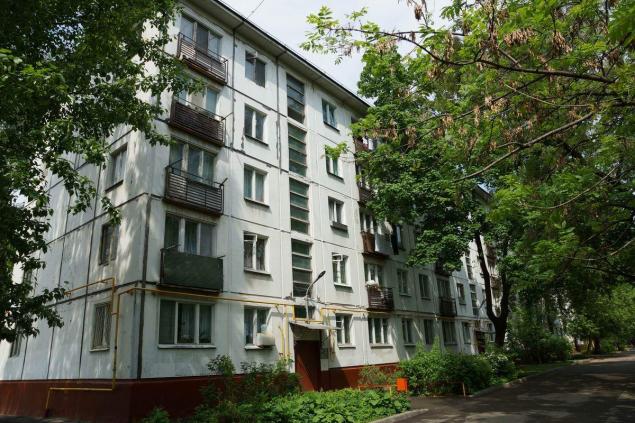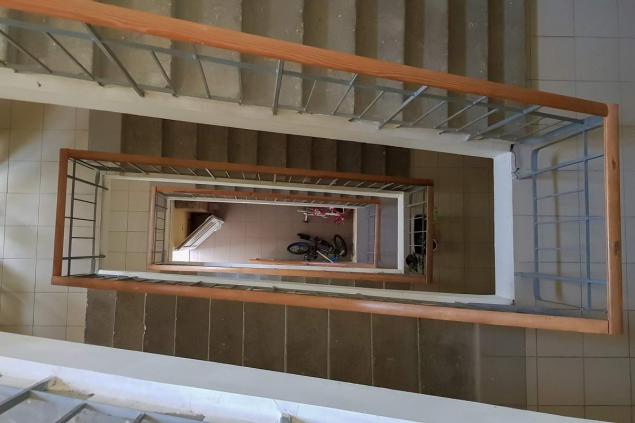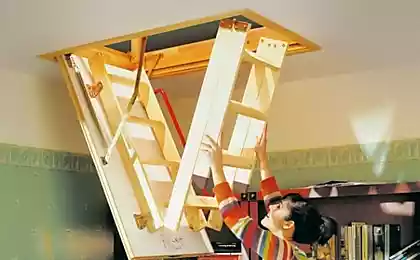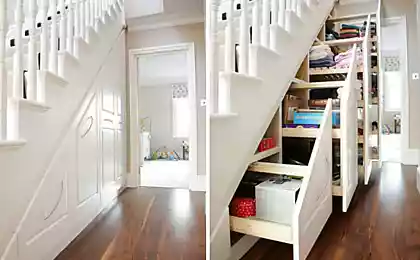275
Why is there always an odd number of steps in the porches?
We are used to everyday things around us and rarely think that they can hide a lot of surprises. You don't even have to go far. Cross the threshold of the apartment and go down the stairs. Do you know why the number of steps in it is almost always odd?

It may seem that the issue is not worth attention. But it's a part of our lives that we've been dealing with every day for decades. And certainly not less important than the news of the divorce of another pop star or the strike of miners in distant Brazil.
In my five-story building, in the houses next door, in the old office buildings that I saw, all the flights of stairs consist of 9 or 11 steps. To find the reason for this dominance of odd numbers will have to go back a couple of millennia.

Living in the VI century BC, the Greek thinker Pythagoras became known not only because of the triangle theorem and the table named in his honor. His travels in Egypt and Babylon interested him in the mystical side of mathematics.
Pythagoras proclaimed odd numbers male and even numbers female. He argued that reluctance to divide into two is a sign of strength, while a tendency to divide is a sign of weakness.
The same division exists in Eastern philosophy. Yin is associated with passivity, feminine, bad luck and even numbers. Yang - with their opposites: aggression, masculine, luck and odd numbers.

What, an odd number of steps - is immortalized in stone the notorious "man's, man's world"? Let's take our time. Living three centuries later in the Roman Empire, the architect Vitruvius wrote a treatise “Ten books on architecture”.

Among other instructions for the arrangement of cities, the ancient urbanist touched on the desired number of steps. The number of steps on the facade should be odd: usually begin to rise from the right foot, and it is necessary to enter the temple.
Modern ergonomics confirms that it is convenient for our body to start and end movement on the same leg. And if there is an even number of steps, we will complete the movement on the other leg.
Before the war, the Soviet Union had no comprehensive standards for building houses. But in the late 1950s, mass construction of standard housing began. The first such project was the K-7 series. It was developed by Vitaly Lagutenko - grandfather of the soloist of the group "Mumiy Troll" Ilya Lagutenko.

Factories for the production of large elements of buildings were opened throughout the country. The savings required unification of production. And the answer to this challenge was SNiPs (building codes and rules).

In the development of SNIPs, studies were conducted on the most appropriate number of steps. After all, the question was very controversial, in tsarist Russia they did both. In the course of research, it became clear that the chance of stumbling at an even amount is much higher.

So it turned out that for common standard projects, an odd number of steps were adopted. According to the SNIP, the number of steps in one ladder march should be at least 3 and no more than 16.
With a smaller number, it is easy to stumble, more makes the ladder “tiring”, and the device of an intermediate platform is required. It is desirable to provide an odd number of steps in the march, since it is more convenient for a person to start and end the movement on the stairs with the same leg.
By the way, very often on the first floors in five-story span is 8 feet, and the rest of the span is already 9 steps, and how many do you have?

It may seem that the issue is not worth attention. But it's a part of our lives that we've been dealing with every day for decades. And certainly not less important than the news of the divorce of another pop star or the strike of miners in distant Brazil.
In my five-story building, in the houses next door, in the old office buildings that I saw, all the flights of stairs consist of 9 or 11 steps. To find the reason for this dominance of odd numbers will have to go back a couple of millennia.

Living in the VI century BC, the Greek thinker Pythagoras became known not only because of the triangle theorem and the table named in his honor. His travels in Egypt and Babylon interested him in the mystical side of mathematics.
Pythagoras proclaimed odd numbers male and even numbers female. He argued that reluctance to divide into two is a sign of strength, while a tendency to divide is a sign of weakness.
The same division exists in Eastern philosophy. Yin is associated with passivity, feminine, bad luck and even numbers. Yang - with their opposites: aggression, masculine, luck and odd numbers.

What, an odd number of steps - is immortalized in stone the notorious "man's, man's world"? Let's take our time. Living three centuries later in the Roman Empire, the architect Vitruvius wrote a treatise “Ten books on architecture”.

Among other instructions for the arrangement of cities, the ancient urbanist touched on the desired number of steps. The number of steps on the facade should be odd: usually begin to rise from the right foot, and it is necessary to enter the temple.
Modern ergonomics confirms that it is convenient for our body to start and end movement on the same leg. And if there is an even number of steps, we will complete the movement on the other leg.
Before the war, the Soviet Union had no comprehensive standards for building houses. But in the late 1950s, mass construction of standard housing began. The first such project was the K-7 series. It was developed by Vitaly Lagutenko - grandfather of the soloist of the group "Mumiy Troll" Ilya Lagutenko.

Factories for the production of large elements of buildings were opened throughout the country. The savings required unification of production. And the answer to this challenge was SNiPs (building codes and rules).

In the development of SNIPs, studies were conducted on the most appropriate number of steps. After all, the question was very controversial, in tsarist Russia they did both. In the course of research, it became clear that the chance of stumbling at an even amount is much higher.

So it turned out that for common standard projects, an odd number of steps were adopted. According to the SNIP, the number of steps in one ladder march should be at least 3 and no more than 16.
With a smaller number, it is easy to stumble, more makes the ladder “tiring”, and the device of an intermediate platform is required. It is desirable to provide an odd number of steps in the march, since it is more convenient for a person to start and end the movement on the stairs with the same leg.
By the way, very often on the first floors in five-story span is 8 feet, and the rest of the span is already 9 steps, and how many do you have?























